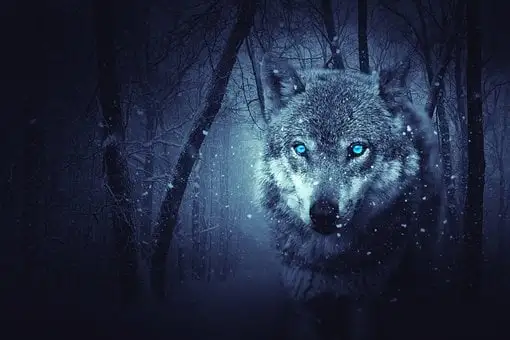The term “leader wolf” or “alpha male” is often used to describe the dominant male in a wolf pack. However, the role of the leader wolf is much more complex than simply being the biggest and strongest wolf.
In this article, we will explore the characteristics, responsibilities, communication, challenges, and importance of leader wolves in ecosystems.
Characteristics of a Leader Wolf
Leader wolves have distinct physical characteristics that set them apart from other wolves in the pack. They are often larger and more muscular, with thicker coats and more prominent features such as larger paws and broader chests.
However, it is not just their physical attributes that make them leader wolves. They also exhibit specific behaviors and traits, such as confidence, assertiveness, and intelligence, that help them maintain their position of dominance within the pack.
Responsibilities of a Leader Wolf
A leader wolf is responsible for maintaining order and ensuring the survival of the pack. They are the ones who make decisions about when and where to hunt, and how to defend against predators. They also play an important role in training and educating younger wolves, and in maintaining the social bonds that hold the pack together.
In addition, leader wolves contribute to the success of the pack in hunting by choosing the best targets and leading the pack in the chase.
Communication and Interaction with Other Wolves
Leader wolves communicate with other wolves in the pack through a range of vocalizations and body language. They use growls, barks, and howls to convey messages such as warning signals, territorial boundaries, and instructions for hunting.
They also use body language, such as raising their tail or ears, to signal their status and intentions to other wolves. In their interactions with subordinate wolves, leader wolves use a combination of dominance displays and aggression to maintain their position of authority.
Challenges Faced by Leader Wolves
Leader wolves face a range of challenges in their role as leaders of the pack. They must compete with other wolves for dominance, and maintain their position against younger or stronger challengers. They also face risks and dangers in protecting the pack from predators, such as bears or other wolves.
As leader wolves age, they may lose their physical strength and ability to lead, and must eventually relinquish their position to a younger wolf.
Importance of Leader Wolves in Ecosystems
Leader wolves play a critical role in maintaining balance in ecosystems by controlling prey populations and preventing overgrazing. They also contribute to the health of their ecosystems by redistributing nutrients through their hunting and scavenging activities.
The loss of leader wolves in ecosystems can have devastating effects on the ecosystem, as seen in the reintroduction of leader wolves to Yellowstone National Park and the resulting positive effects on the ecosystem.
Related: How many Wolves are in a Pack
Conclusion
The role of the leader wolf is a complex and important one in the survival and success of a wolf pack. Leader wolves exhibit specific physical characteristics and behaviors that distinguish them from other wolves, and they play a critical role in maintaining order and ensuring the survival of the pack.
Understanding and protecting leader wolves is essential for maintaining balance and health in ecosystems. It is important to continue research and conservation efforts to protect and preserve wolf populations and their ecosystems.
